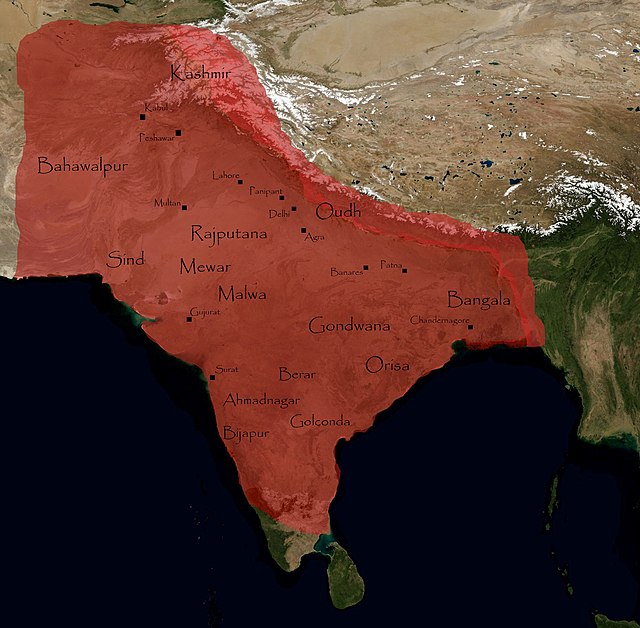@
Chak Bamu ,
Babur was indeed a man of foresight and was capable in strategy, the army that he commanded were composed of men from different parts of the world; many of them were Persian, Afghani tribesmen, Mongols, Turkmen. In the campaign to Peshawar, he had to motivate his soldiers, many of whom were so used to the cool temperatures of Central Asia, to continue on despite the heat of India's summers. To success, he and his army of central asians were able to subjugate the Punjab and also defeated the Rajputs and made them into loyal allies. Contrary to what others say, Mughals , especially under the reign of Babur , Hamuyan, Akbar -- they actually contributed a sense of acceptance. Rajputs , who were always Hindus , remained Hindu and practice the religion of their forefathers without persecution from Mughals. In fact, Mughal princes would marry Rajput princesses and thus the court culture of Mughal Emperors were transferred onto the Rajputs and to an extent even in Delhi.
Let's be objective when we compare the Babur's actions to that of another of his kinsmen, Hulagu Khan, who led the Mongol invasion in the Siege of Baghdad. Khan was notorious for his brutality committed on soldiers of the Abassid Caliphate. In fact when Hulagu Khan's forces took Baghdad, instead of offering surrender terms to Al-Musta'sim Billah, or even offered to give him clemency and mercy. Hulagu Khan had the Caliph tied to his horse and dragged all throughout Baghdad until the Caliph was literally dragged and stamped to death by the hooves of Mongol horses. Let us compare that with Babur, shall we?
Babur started his campaign in November 1525, when he reached Peshaar he got the news that Daulat Khan Lodi had switched sides and drove out Ala-ud-Din. Babur then marched onto Lahore to confront Daulat Khan Lodi, only to see Daulat's army melt away at their approach. Daulat surrendered and was pardoned, thus within three weeks of crossing the Indus Babur became the master of Punjab.
Babur, unlike Hulagu, gave mercy to his opponent and pardoned him. So it is incorrect to make a blank judgment on Babur that he and his kin were excessively brutal or unmerciful. Compared to actions committed by other Mongol Lords, Babur was a saint.

Lastly, I find it rather interesting that some posters here keep on claiming Babur and the Mughals as
foreign invaders. I mean, most of humans are invaders, India is the amalgamation of foreign invaders that have in a way contributed to the overall entity, and genetic make up of the people. Present day Indians and Pakistanis are not 'pure', but a mix of ethnicities. If we really want to refer to the 'pureness' of indigenous people in the subcontinent , I would say that the 'pure' Indians are the Dravidians, who are literally of another race. These are the people that inhabit the Andaman islands and parts of Southern India. The rest of the people in India are a mixture of Aryan peoples and Dravidian. And these are the caucasoids, the people that make up North East India's 7 states were never really considered part of 'Bharat', but were independent states that had much closer ties with Austroloids and Austronesians of continental South East Asia. These had more genetic and cultural similarities with the Mon Khmer who made up the Khmer Empire, also with the Tai peoples that settled and ruled what was the Sukkothai Empire, Lan Xang Kingdom and the Ayuthaya Kingdom.
So I deign to say that invaders and 'foreign' peoples have been influencing India and the subcontinent since time immemorial. I would even say that invasion and foreign influence is not limited to the subcontinent only, the same can be said in East Asia, South East Asia, The Americans (North, Central ans South), and even in Europe.
Regards,
I remain,
@
Nihonjin1051
























 . .
. .